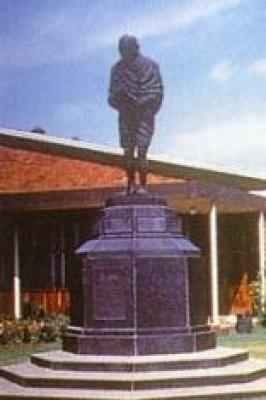Mahatma Ghandi arrived in Natal in 1893 as a young lawyer. He travelled around Natal pleading cases.
Ghandi had his first taste of racial discrimination shortly after his arrival in South Africa, when he was thrown off a train at Pietermaritzburg station after he refused to move to a third-class carriage.
The city of Pietermaritzburg, about 100km from Durban erected a statue of Gandhi on the site where he was arrested for riding in a whites' only train carriage. He claimed that this incident was the inspiration for his strategy of passive resistance, or Satyagrah.
In 1903, he started the Indian Opinion, a weekly newspaper published in English, Gujarati, Hindi and Tamil. The paper is still published today under the name Opinion.
During the South African War the role of South African Indians was confined to stretcher bearing, a duty Ghandi himself undertook after the Battle of Spioenkop.
Often controversial and unpopular amongst his rivals in The Natal Indian Congress, Ghandi was nonetheless seen as a champion of the masses when he led a protest march of mainly working class Indians from Newcastle over the Transvaal border in 1913.
This sparked off a strike by Indian workers in the South and the ensuing reports of police brutality and the arrest of Ghandi's release. On his return to India in 1913, Ghandi was already being hailed as a Mahatma' (great soul)
Towns in KwaZulu-Natal which have a Ghandi interest include Durban, Pietermaritzburg, Ladysmith, Dundee, Glencoe and Newcastle.
